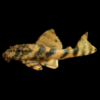To provide the best experiences, we use technologies like cookies to store and/or access device information. Consenting to these technologies will allow us to process data such as browsing behaviour or unique IDs on this site. Not consenting or withdrawing consent, may adversely affect certain features and functions.
The technical storage or access is strictly necessary for the legitimate purpose of enabling the use of a specific service explicitly requested by the subscriber or user, or for the sole purpose of carrying out the transmission of a communication over an electronic communications network.
The technical storage or access is necessary for the legitimate purpose of storing preferences that are not requested by the subscriber or user.
The technical storage or access that is used exclusively for statistical purposes.
The technical storage or access that is used exclusively for anonymous statistical purposes. Without a subpoena, voluntary compliance on the part of your Internet Service Provider, or additional records from a third party, information stored or retrieved for this purpose alone cannot usually be used to identify you.
The technical storage or access is required to create user profiles to send advertising, or to track the user on a website or across several websites for similar marketing purposes.

















Emily Carter (verified owner) –
I recently added the L393 Cheese Creek Bristlenose to my aquarium, and I couldn’t be happier! After about two months of observing him, I can confidently say he’s one of the most charming freshwater catfish I’ve ever kept. His striking pattern and gentle demeanor really bring life to my setup. What I love most is how he diligently cleans algae off the decor and glass, making my tank look pristine without much effort on my part. Compared to other catfish I’ve had, like the standard albino pleco, this guy has a much more engaging personality and is smaller, making him perfect for my 55-gallon tank. The shipping was seamless, and he arrived healthy and ready to explore. My only minor concern is that he can be a bit shy at times, so having a few hiding spots in the tank really helps him feel secure. I highly recommend this species to anyone looking for a hardworking and visually stunning aquarium catfish. He’s a true gem for any aquarist, especially those new to the hobby. Trust me, you won’t regret adding one of these beauties to your collection!
Amanda Parker (verified owner) –
I recently added the L393 Cheese Creek Bristlenose to my aquarium, and I couldn’t be happier! These little guys are not only stunning with their unique patterns, but they’re also fantastic algae-eating fish. After about two months, I’ve noticed a significant decrease in algae on my plants and tank walls. They’re the perfect companions for my freshwater landscape, creating a balanced ecosystem. I love how they interact with their environment, exploring every nook and cranny while keeping my plants healthy.
I’ve tried other plecos before, but the Bristlenose stands out because of their smaller size and gentle temperament, making them perfect for community tanks. They do require a hiding spot, so I added a few caves, and they took to them right away. Just a minor note—be sure to check the water parameters regularly as they thrive in stable conditions. If you’re looking for a friendly, effective algae eater that adds character to your tank, I highly recommend the L393 Bristlenose. They truly elevate the beauty and health of my setup!